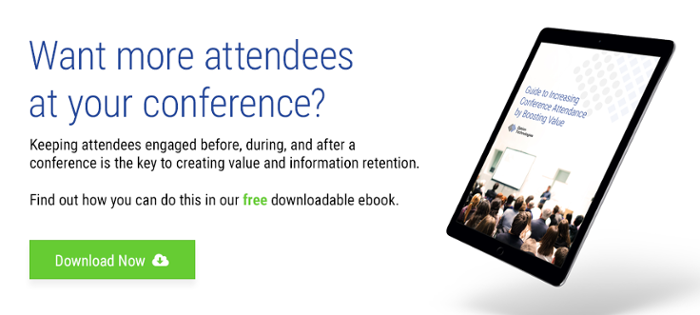This is the story of a conference presenter, Leigh, and how she used audience response technology to recover from her worst professional nightmare: giving a presentation that was an absolute flop.
Leigh’s Failed Presentation
Leigh was contracted to give a presentation at a small convention that she had never attended before. It was a newer convention, too, so she didn’t know anyone who had been there. She Googled the convention in advance and emailed back and forth with her contact person at the event, but she never could quite get a grasp on what kind of audience she would be addressing.
She worried about presenting information that would be too advanced or complicated for her audience to follow, so she decided it would be best to stick with the basics.
She got to the venue early to set up and was thrilled when the turn-out for her session was great. She flew through her slides, got a few laughs from the audience, and shared her standard information, making sure that she went into detail with the ground-level information that she felt the audience would need to understand her claim. She noticed people leaving at the 20 minute mark, which was discouraging, but she kept going.
At the end of her talk, she shook some hands, chatted with a few people, and enjoyed the catered lunch. Still, she had a sinking feeling in her stomach. The vibe she got from the attendees wasn’t the excitement or enthusiasm that she usually got from her audience. People didn’t approach her to share ideas or get her feedback.
When she received a copy of the feedback the convention organizers had received from her session, she realized what had gone wrong. Comment after comment said the same thing:
- This information was too basic.
- I already knew this.
- I thought we were going to be learning about this from a more advanced perspective.
- I was looking forward to this topic, but it ended up being way too simplistic.
Leigh was really upset. She wished she had known that the audience for this event was not an intro-level audience, but rather, a group who was already familiar with her topic and ready to move on. No wonder people had left or seemed disinterested. They hadn’t learned anything new from her!
The worst part was learning that her presentation had played a big part in the dissatisfaction the attendees felt with the conference on the whole— the organizers started planning for a decrease in next year’s attendance thanks to the low feedback scores.
Leigh Discovers OptionPower
Disappointed in herself and worried about how to prevent this same thing from happening again, Leigh started looking into ways to know more about her audience, even if the event planners didn’t have much to share with her. That’s when she learned about audience response technologies--a way to garner information in real time from a group of participants.
She had seen some of these tools used before, but until now, she hadn’t considered how she could use them for her own presentations. The next time she was contacted for a speaking engagement, she asked if the convention had a an audience response system available for speakers. They did! The conference told Leigh that they would have OptionPower audience response keypads available at the event. Thrilled, Leigh began implementing her ideas for using audience response in her presentation.
Leigh’s Next Presentation
The next month, Leigh walked into another room of convention attendees that she didn’t know much about, but this time, she wasn’t worried about not being able to meet their needs or expectations. Today, Leigh was prepared.
The first thing she did at the start of her talk was poll the audience for demographic information, which they entered from their keypads. She quickly learned that only 10% of those in attendance had graduate degrees in her field, whereas everyone else did not. When she asked people to identify terms they were already familiar with, she immediately knew which terms she needed to spend time defining before moving on to more complex material.
She even asked which of three issues the crowd thought was most relevant to their needs, and there was a marked difference between the three options. That meant that Leigh was able to easily adapt her presentation on the spot to prioritize her audience’s needs.
Leigh looked forward to hearing from the conference directors how her event was received, and this time, the remarks were glowing. Attendees felt like they connected with her and the material. They felt valued when she asked for their input, and no longer did she receive comments about the material not matching their needs.
Best of all, Leigh was invited to speak again next year, as many attendees specifically asked for her to return. Sure enough, the conference grew in attendance the next year, and Leigh’s event was well attended. She would not plan another talk without incorporating audience response technology.


